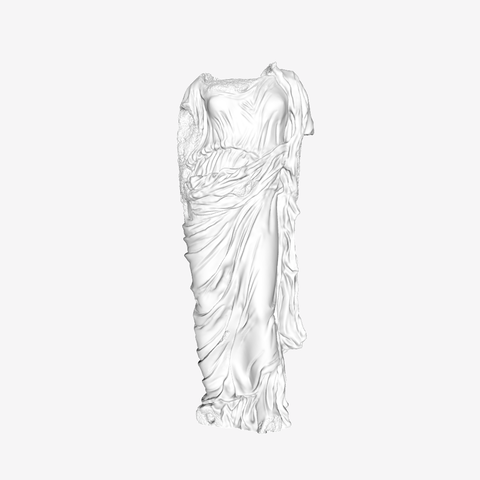
Aphrodite Doria-Pamphili at The Louvre, Paris
cults3d
This exquisite statue of Aphrodite is a masterpiece among copies of classical sculptures from the final years of the 5th century BC. The name of this style of statue owes its origin to the most complete surviving example now housed in the Doria Pamphili Palace in Rome. However, the question of the original's attribution remains open to debate. Some experts believe that the statue is a copy of Phidias' Aphrodite Urania, while others attribute it to Agorakritos of Paros. A copy from the classical era In 1996, the Louvre acquired an impressive marble statue formerly located in the grounds of Ombreval, the property of Stéphane Dervillé in Domont, Val d'Oise near Paris. The work was crafted using the acrolithic technique where extremities - the head, right shoulder, arms, and feet - were sculpted separately and later added to the whole marble piece. This effigy of Aphrodite is one of a series of copies from a Greek work dating back to the classical era specifically the last decades of the 5th century BC. The most complete example now housed in the Doria-Pamphili Palace in Rome has given its name to this style of statue in general. Polykleitos, a renowned classical sculptor, inspired the contrapposto position which he invented in the mid-5th century BC characterized by an asymmetrical pose where shoulders are turned in the opposite direction to hips and one leg is slightly forward causing the weight of the body to be on the other leg. Identifying the sculptor The question of the sculptor's identity has sparked much debate. The treatment of drapery and the nude shoulder, a motif often used by sculptors to denote the sensuality of love goddesses, links this Aphrodite to the semi-reclining Aphrodite on the eastern pediment of the Parthenon. This suggests that the original work is sometimes attributed to Phidias who directed architectural decor on the Parthenon between 447 and 432 BC. In this case, the original is identified as either Aphrodite Urania in Elis described by Pausanias or the Aphrodite on the Agora in Athens. However, this attribution poses several difficulties including effects of drapery that exceed the aesthetic canon of the Parthenon and are more similar to works from the end of the 5th century BC. Likewise, none of the Doria-Pamphili-style copies include the tortoise on which Aphrodite Urania in Elis was resting a foot. This sculpture is therefore more likely to be the work of Agorakritos of Paros a student of Phidias who also worked on the Parthenon and probably completed this statue around 420 BC. The stylistic similarities between this copy and what we know of Agorakritos' major work, Nemesis of Rhamnus would seem to confirm this hypothesis. A typically mannerist work The sculptor responsible for the Aphrodite in the Louvre has produced a masterful rendering of the richness and diversity of folds of the goddess's garment carving marble in a style typical of sculptors working in the late 5th century BC. The goddess is wearing a thin short-sleeved tunic known as a chiton and a mantle of thicker fabric, a himation. The wind plays with the cloth of her garments molding it to the goddess's body in places and filling it out in others.
With this file you will be able to print Aphrodite Doria-Pamphili at The Louvre, Paris with your 3D printer. Click on the button and save the file on your computer to work, edit or customize your design. You can also find more 3D designs for printers on Aphrodite Doria-Pamphili at The Louvre, Paris.
